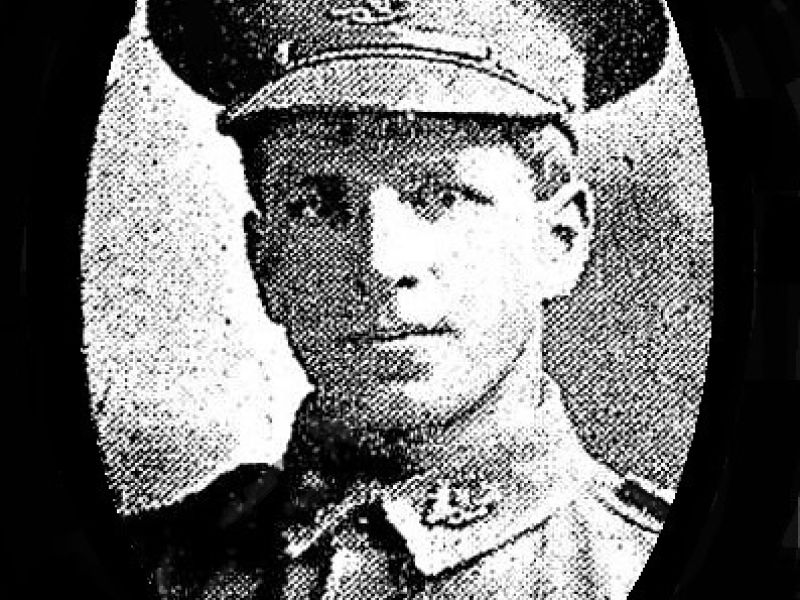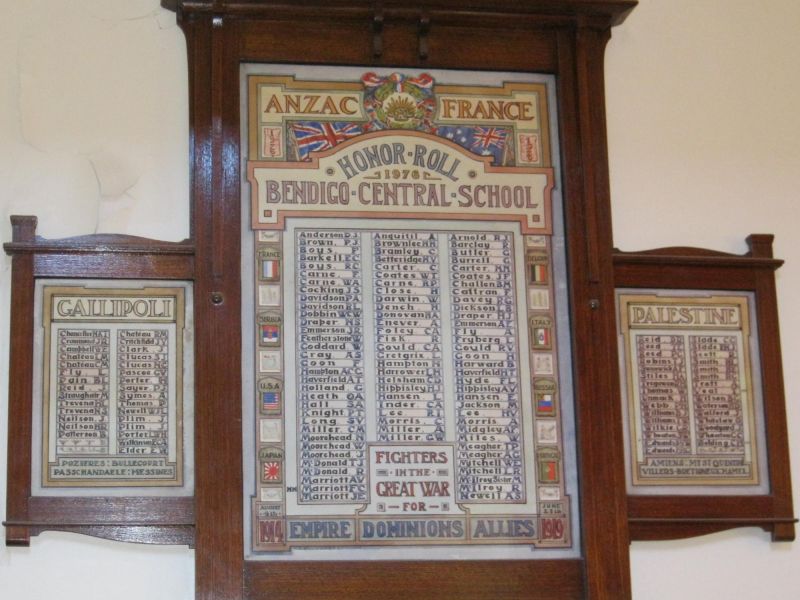319 Private Harold Craig Close, 23rd Battalion, AIF
Harold Close was born on 11 March 1896 in the Melbourne suburb of Caulfield, one of three sons born to John and Elizabeth Close. Harold’s father worked as a stock and dairy inspector in Bendigo, where Harold grew up. In 1913, Harold’s older brother Jack died at the age of 21 after an extended period of rheumatic fever. Harold was educated at the Central State School in Bendigo, then he went to work on a sheep and cattle station at Talmalmo, New South Wales, in order to gain experience in farming.
Harold Close enlisted in the Australian Imperial Force in February 1915, shortly before his 19th birthday. He underwent a period of training in Australia before leaving for active service on board the troopship Euripides in May 1915. He was first sent to Egypt, and from there to Gallipoli.
On 2 September 1915 the troopship carrying men of the 2nd Australian Division to Gallipoli was torpedoed by a German submarine. Private Harold Close was one of hundreds of Australian servicemen who assembled on the promenade deck to wait their turn to board a lifeboat. Almost all were saved, and the men repeatedly commended for their coolness and bravery while the ship was sinking. After their rescue they were sent on to Lemnos while the Southland was salvaged, and from there they went to Gallipoli.
Private Close had been on Gallipoli a short time when he was wounded. He was looking over the parapet of a trench with a periscope when the scope was shot. Splinters went into his face, and he was taken to the casualty clearing station for treatment. His wounds were bad enough that he was taken to hospital on Malta.
In November 1915 Private Close was transferred to hospital in England for further treatment of his facial wounds. He was finally well enough to be sent back to the 23rd Battalion where it was training in Egypt in March 1916. Less than two weeks later he accompanied his battalion as it was sent on to France to fight on the Western Front.
The 23rd Battalion first entered the front line in a quieter sector of the front near Armentieres. The war diary notes that their time in the front was initially quiet, and that the enemy’s attitude was “not aggressive”. As their stay in the front line went on, however, the Germans began to shell their position more frequently, and occasionally sent over fire from trench mortars.
On 16 April 1916 the 23rd Battalion again came under fire from German artillery. One officer and six other ranks were wounded in the fire and evacuated from the front line. Among the men wounded was Private Harold Close. Suffering from shell-wounds to the head, he was taken to a Canadian casualty clearing station, where he died of his wounds two days later.
Private Harold Close’s remains were buried near the Casualty Clearing Station, and today he lies in the Bailleul Communal Cemetery Extension beneath the simple epitaph: “loving remembrance”. He was 20 years old.

 Australian War Memorial
Australian War Memorial